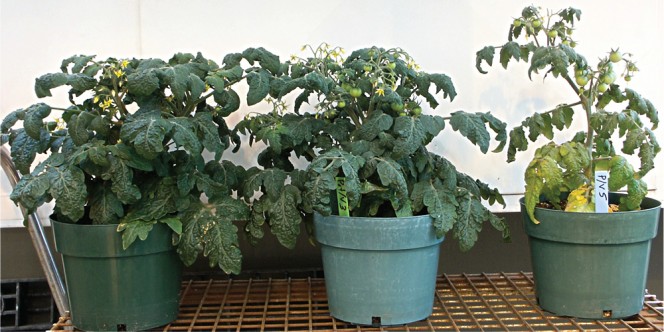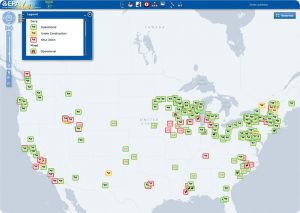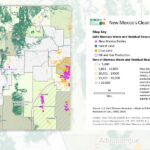BioCycle July 2015
Washington, DC: AgSTAR Website Redesign
The U.S. Environmental Protection Agency’s AgSTAR program unveiled a new website design in June, starting with a new descriptor: AgSTAR: Biogas Recovery in the Agriculture Sector. The site features easy access to the AgSTAR database of almost 250 livestock manure digester projects, and how-to information on digester systems, permitting for codigestion and financing options. Another feature is AgSTAR’s robust multilayer mapping tool that enables the user to locate anaerobic digesters using livestock waste; examine the potential for growth in the agriculture sector; identify and compare investments; find organizations related to the AgSTAR program; and compare state incentives, policies, standards and emissions. Visit the site at www.epa.gov/agstar to review the new features and streamlined content, suggests the June issue of AgSTAR Digest. And then send comments about the changes to agstar@epa.gov “and you may be featured in our next AgSTAR Digest.”
Ottawa, Ontario: Canadian Biogas Association RNG Report
“Closing the Loop” is a collaborative initiative of the Canadian Biogas Association (formerly Biogas Association) that involves working with municipalities, food processors and their energy and waste partners (i.e. waste haulers and energy utilities) to close the loop on organic materials by diverting these materials from landfill, and using them to generate biogas and renewable natural gas (RNG). The project promotes RNG as a vehicle fuel to close the loop on diverting organics. Recently, CBA released, “Closing The Loop: Primer for Municipalities, Food Processors and Fleets on Fueling Vehicles Using Renewable Natural Gas,” which outlines how RNG fits with municipal planning and policy development. Case studies and lessons learned are highlighted. Blending RNG with compressed natural gas (CNG) is discussed in depth in “Closing The Loop.” For example, notes the primer, blending 10 percent RNG in with CNG further reduces greenhouse gas emission gained by switching from diesel to CNG, and “costs only an additional 5 cents per diesel litre equivalent. … This makes a CNG/RNG blend cost-effective at about half the price of diesel.” Access the Primer at www.biogasassociation.ca
Albany, New York: Reforming The Energy Vision
New York State (NYS) is in the midst of a once-in-a-century revision of electric utility rates and regulations. The intent is to spur distributed energy, make the grid more resilient and lower its carbon intensity. The road map to a renewable energy future is laid out in “REV,” New York’s comprehensive State Energy Plan to enable self-sustaining clean energy markets at scale, supporting a cleaner, more reliable, and affordable energy system. REV — Reforming the Energy Vision — has three main components, explains Greg Hale, senior adviser to Richard Kaufmann, who chairs the Governor’s Energy & Finance office: “Lower greenhouse gas emissions; Be prepared before and after extreme weather events to ensure our energy system is resilient and reliable; and Make our energy bills more affordable for consumers, both residents and businesses.”
There are billions of dollars of investment required just to maintain the state’s electric grid. “Over the past ten years, New York spent $17 billion to maintain the infrastructure of our electric power grid,” notes Hale. “We predict that number to jump to $30 billion over the next decade under a business as usual approach. While we will still need to fix our central grid, we need to be more efficient and thoughtful with how we rebuild it.” The current infrastructure is built to have an adequate power supply to meet peak load demand. “To be responsive, the grid is designed to ensure there is capacity on the hottest days of the year, but we pay for that extra capacity all year round,” he adds. “Peak load is growing several times faster than baseload demand, so we need to find solutions that reduce or shift peak load.”
Water Resource Recovery Facilities or WRRFs (essentially wastewater plants that maximize energy efficiency and production of renewable energy, e.g., via codigestion) “are an important part of the grid infrastructure, and shouldn’t be left out of the system efficiency and climate equation,” Hale explains. In terms of emergency preparedness, WRRFs can provide power to themselves to keep the plants operating, as well as potentially feed power into a community microgrid. There is also the potential to add other distributed energy resources such as solar.
Paris, France: Accelerating Biogas Development
France is in the midst of a three-year experiment launched in June 2014 that is aimed at accelerating biogas and wind development by cutting excess bureaucratic procedures, reports the European Biogas Association (EBA). Instead of a system that requires multiple departments to issue construction and operating permits that can take several years, the French Government has streamlined the process for biogas plants in seven of France’s 22 regions into a single permit. One biogas project in the French Pyrenees was reported to take six years of studies, permits and meetings on topics ranging from the risk of lightning strikes to the local flora near the farm where construction is finally set to start on a fermentation plant to convert cattle and duck manure into heat and power. The long lead time for projects discourages investment and holds back French biogas expansion, according to Engie (formerly GDF Suez), operator of Europe’s largest natural gas network.

Tomato growth four weeks after transplant. Left: 100% potato digestate; Middle: 50:50 digestate and vermiculite; Right: 50:50 peat and vermiculite
Peoria, Illinois: Potato Waste Digestate Outperforms Peat
Sphagnum peat moss is one of the most commonly used substrates in commercial horticulture, along with pine bark, coconut fiber (coir), vermiculite, perlite, rock wool, rice hulls and various composts. But concerns about the sustainability of harvesting peat moss from wetland bogs has prompted some to seek alternatives. And a U.S. Department of Agriculture (USDA) researcher says he has found one in anaerobically digested potato waste. In controlled trials comparing air-dried potato peel digestate with peat, Steven Vaughan, a plant physiologist at the USDA’s Agricultural Research Service Utilization Research Center in Peoria, discovered that the digestate equaled or bested peat in promoting better growth in tomato plants and marigolds.
Vaughn says that several years ago, a microbiologist was working with Cavendish Farms on Prince Edward Island, Canada, which had shifted from expensive off-island processing of its potato waste to being one of the first potato industry facilities to install an anaerobic digester. Cavendish Farms sent Vaughn ten 55-gallon drums of wet potato digestate, which he air-dried. “It had a slight `sour’ odor at first, but the dried digestate has a pleasant earthy odor with a physical appearance similar to sphagnum peat moss,” notes Vaughan, who began testing it as a peat moss replacement in both starter and transplant substrates.
Vaughn explains that the NPK (Nitrogen-Phosphorus-Potassium) values of the digestate are about 10 times higher than aerobic compost. He was “a little worried” at first that the digestate’s level of dissolved solids in solutions might stress the plant, but it worked well. The control mix was 50 percent peat moss and 50 percent vermiculite, with a slow-release chemical fertilizer added. This was compared to a 50:50 mix of digestate and vermiculite, and 100 percent digestate. After four weeks, both tomato and marigold transplants in 100 percent digestate were as tall or taller, and heavier, than the transplants in the peat moss mixed with fertilizer, reports Vaughn. The 50:50 mix of digestate and vermiculite had pretty similar results as the 100 percent digestate, although the latter performed slightly better.













